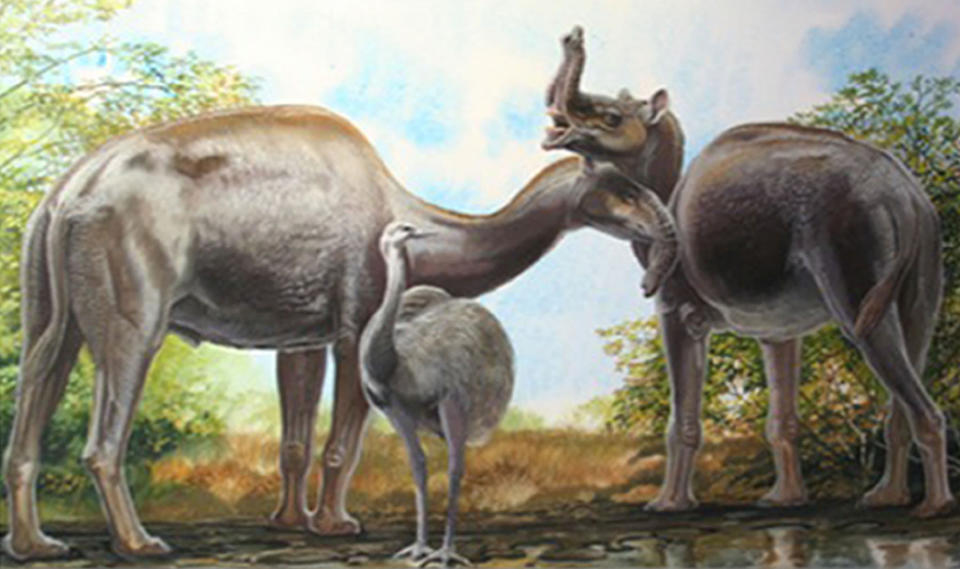Strangest animal ever discovered: Darwin's 200-year mystery solved

A 200-year-old evolutionary puzzle surrounding a group of animals described by Charles Darwinas "the strangest ever discovered" has been resolved by scientists.
International experts, including a team from London's Natural History Museum, found evidence that South America's extinct "native ungulates", the last of which died out 10,000 years ago, are related to horses.
Previously, scientists had struggled to trace the evolution of the creatures, which possessed features seen in many different unrelated species.
In the past they have been linked to elephants and other species with an African origin.
The new findings, published in the journal Nature, are based on studies of fossil collagen protein, which can survive much longer than DNA.
Dr Ross MacPhee, from the American Museum of Natural History, said: "Fitting South American ungulates to the mammalian family tree has always been a major challenge for palaeontologists, because anatomically they were these weird mosaics, exhibiting features found in a huge variety of quite unrelated species living all over the place.
"This is what puzzled Darwinand his collaborator Richard Owen so much in the early 19th century. With all of these conflicting signals, they couldn't say whether these ungulates were related to giant rodents, or elephants, or camels, or what have you."
Collagen is a structural protein found in all animal bones that can survive for a million years or so in a wide range of conditions.
In contrast, DNA degrades rapidly in warm, wet conditions like those typical of South America.
Amino acids - protein building blocks - from the collagen of different species can be compared to see how closely they are related.
Using this technique, known as "proteomic analysis", the scientists screened 48 fossils from two species whose remains Darwindiscovered 180 years ago in Uruguay and Argentina, Toxodon platensis and Macrauchenia patachonica.
They were able to show conclusively that the closest living relatives of these species were perissodactyls, a group that includes horses, rhinos and tapirs.
The evidence suggests that ancestors of South American ungulates arrived from North America more than 60 million years ago, probably soon after the mass-extinction that killed off the dinosaurs.
Co-author Professor Ian Barnes, from the Natural History Museum, said: "Although the bones of these animals had been studied for over 180 years, no clear picture of their origins had been reached."
Related articles
Video: The Galapagos Islands on Google StreetView
New species of snake discovered in Brazil looks like a penis






